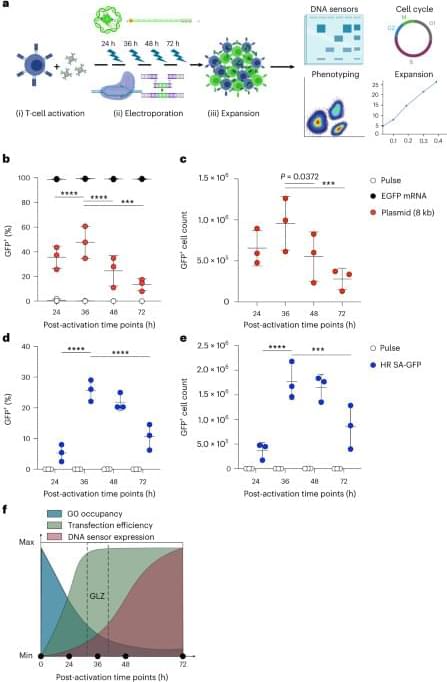A nonintrusive human-machine interface for controlling extra arms was tested using a neurorobotic platform.



Ferroicity and multiferroicity
Ferroic materials are those that exhibit a spontaneous ordering of their electric, magnetic or structural properties. The best-known example of ferroicity is ferromagnetism, in which the magnetic moments of a material all point in one direction, but other types of ferroic ordering are possible. In ferroelectricity, for example, it is the electric polarization that spontaneously orders itself, while ferroelastic materials display spontaneous strain.
Multiferroicity occurs when several properties of a material have their own individual preferred states. For example, a magnetic multiferroic material might have magnetic moments that point in one direction, and electric charge that also shifts in a certain direction. Importantly, the two phenomena are independent of each other.



Brain transplant is not a reality for humans or for any living organism. But there are human research experiments in which transplanted brain cells are used to help treat several diseases that affect the brain. So far, there are very few results and measured outcomes of brain cell transplant, but the concept of transplanting brain tissue has shown some promise in preliminary studies.
If you are interested in having a brain cell transplant procedure, you can talk to your healthcare provider and look for a university or research center where brain cell transplant procedures are being done. These procedures tend to be part of research studies, so you will likely need to enroll in a research study if you want to have this type of treatment.
The brain is composed of many different regions and cells. Neurons in the brain have dedicated functions, and they do not typically heal when they are damaged. Parkinson’s disease, stroke, multiple sclerosis (MS), epilepsy, Alzheimer’s disease, and head trauma are among the conditions for which brain cell transplant has been used for humans in an experimental setting.



A recent analysis of a peculiar pair of galaxies located billions of light-years away suggests the possibility of a cosmic string —a hypothetical feature in the fabric of the Universe. Initially considered distinct, the two galaxies may be duplicated images caused by gravitational lensing, a phenomenon where space-time bends around foreground mass, acting like a lens.
Led by researchers of the Indian Institute of Astrophysics, the study identifies a cosmic string candidate, CSc-1, in the cosmic microwave background, the lingering radiation from the Universe’s birth. Cosmic strings, theoretical one-dimensional wrinkles formed at the dawn of time, are believed to be highly dense and massive, potentially extending across the entire Universe.
Observationally proving cosmic strings is challenging because their effects can resemble other phenomena. However, minute differences in their impact distinguish them. The researchers focused on a galaxy pair, SDSSJ110429, within CSc-1 as a potential cosmic string signature. Gravitational lensing typically involves a foreground mass causing observable distortions, but SDSSJ110429 lacks evident foreground mass or distorted light.

The Chinese military has been escalating its cyber capabilities, posing a potential threat to key American infrastructure. This includes power and water utilities, as well as communication and transportation systems. Over the past year, hackers affiliated with China’s People’s Liberation Army have successfully infiltrated the computer systems of approximately two dozen critical entities.
These cyber intrusions are not isolated incidents. They are part of a broader strategy to develop methods that could cause panic, chaos, or disrupt logistics in the event of a U.S.-China conflict. The victims of these cyber-attacks include a water utility in Hawaii, a major West Coast port, and at least one oil and gas pipeline. There was also an attempt to breach the operator of Texas’s power grid.
Takeaways:
• The Chinese military is reportedly increasing its attempts to infiltrate essential infrastructure, utilities, communication, and transportation services in the U.S., according to anonymous U.S. officials and cybersecurity experts.
• Hackers linked with China’s People’s Liberation Army have infiltrated around two dozen essential service entities in the past year, including a water utility in Hawaii, an oil and gas pipeline, and a West Coast port.